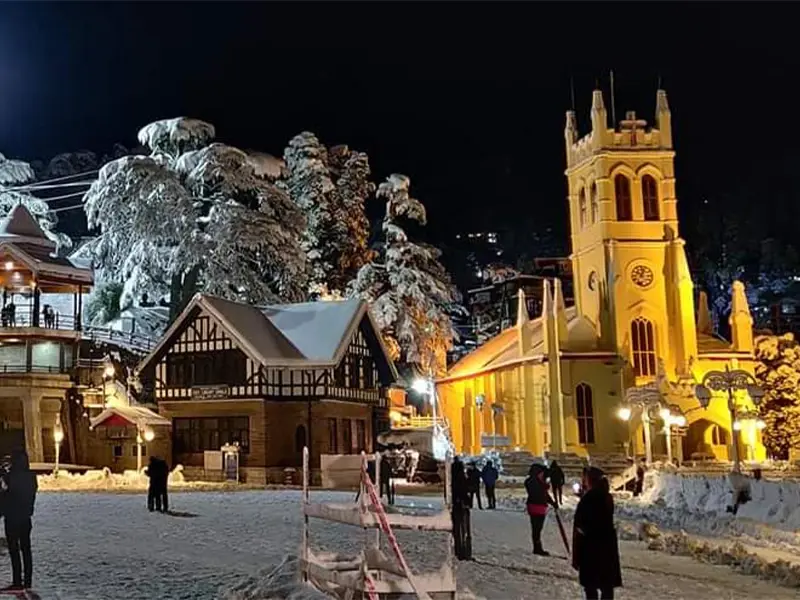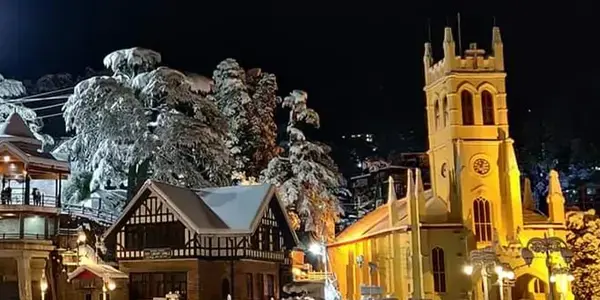


Built in Gothic revival style between 1844–1857, christ church shimla is the second-oldest church in North India. Commissioned by Colonel J. T. Boileau and finalized by Lockwood Kipling, it was consecrated on January 10, 1857. Its illuminated façade, clock tower (donated 1860), and stained glass windows—depicting Faith, Hope, Charity, Fortitude, Patience, Humility—make it a Ridge landmark The church installed its impressive pipe organ in September 1899 (cost ~₹23,000). Renovated in 1932, it remains the largest operable pipe organ in the subcontinent Read More
.webp)
Packages Of Shimla
Classic hill-station charm with scenic views and cosy stays.

Places To Visit In Shimla
Top places to visit in Shimla, beautifully curated.
.webp)
Images Of Shimla
Discover Shimla’s colonial charm, hills and nature through images
Packages Of Shimla
Places To Visit In Shimla
Images Of Shimla
Top things to know
Entry is free; donations welcome
Dress modestly—cover shoulders/knees
Opens daily; check times for services
Best visits: sunrise for stained glass glow
Enjoy a post-service ginger tea nearby
Watch your step—stone floors can be uneven
Clock chimes late—local legend says it rings itself!
Winter & Christmas season (festive visuals)
Built in Gothic revival style between 1844–1857, christ church shimla is the second-oldest church in North India. Commissioned by Colonel J. T. Boileau and finalized by Lockwood Kipling, it was consecrated on January 10, 1857. Its illuminated façade, clock tower (donated 1860), and stained glass windows—depicting Faith, Hope, Charity, Fortitude, Patience, Humility—make it a Ridge landmark The church installed its impressive pipe organ in September 1899 (cost ~₹23,000). Renovated in 1932, it remains the largest operable pipe organ in the subcontinentI. Surviving the Partition without damage, it now serves Hindi and English congregations, with bilingual services and annual carol nights. Over the decades, the clock mechanism was electrified but has retained its signature chimes The church holds a place in Shimla’s social fabric, as much for its worship services as for preserving colonial-era architecture and spiritual ambiance
Facts
Built: 1844–1857; cost ₹40–50 k
Clock tower added 1860; porch added 1873
Pipe organ installed 1899, renovated 1932; largest in subcontinent
Holds stained-glass windows by Lockwood Kipling
Survived Partition; first Indian chaplain 1948–57
The Bells That Never Sleep: Rumor persists that the tower’s mechanical chimes toll even when locked, first reported after Partition when no one was on duty.
Hilly terrain is a dynamic landscape characterized by rolling or steep slopes, varying elevations, and a mix of hills, ridges, valleys, and plateaus. These features are the result of geological processes such as tectonic movements, erosion, and weathering over time.